Abstract
Some macrolide antibiotics cause clinical drug interactions, resulting in altered metabolism of concomitantly administered drugs, via formation of an inactive cytochrome P-450 complex. In the present study, the formation of a cytochrome P-450 type I binding spectrum and a metabolic intermediate complex by troleandomycin and dirithromycin was assessed in liver microsomes obtained from untreated rats and phenobarbital- or dexamethasone-pretreated rats. Troleandomycin produced a type I binding spectrum and metabolic intermediate complex in microsomes from dexamethasone- and phenobarbital-pretreated rats. Dirithromycin did not produce a detectable type I binding spectrum but formed a small cytochrome P-450 metabolic intermediate complex (6% of that formed by troleandomycin) in microsomes from dexamethasone-pretreated rats only. The formation of a cytochrome P-450 type I binding spectrum and a metabolic intermediate complex by troleandomycin, erythromycin, dirithromycin, and erythromycylamine was also assessed in microsomes prepared from human livers. Troleandomycin and erythromycin formed a type I binding spectrum and a metabolic intermediate complex which were larger in microsomes from subjects on barbiturate therapy than in microsomes from subjects with no recent barbiturate exposure. Erythromycylamine did not form a detectable type I binding spectrum with any of the human microsomal samples, but a small metabolic intermediate complex was formed with microsomes from a subject on phenobarbital, phenytoin, and propranolol therapy. Dirithromycin did not form a detectable type I binding spectrum or a metabolic intermediate complex in any human liver sample. Preclinical quantitation of the human metabolic intermediate complex may be helpful in predicting the possibility of clinical drug interactions of new drug candidates.
Full text
PDF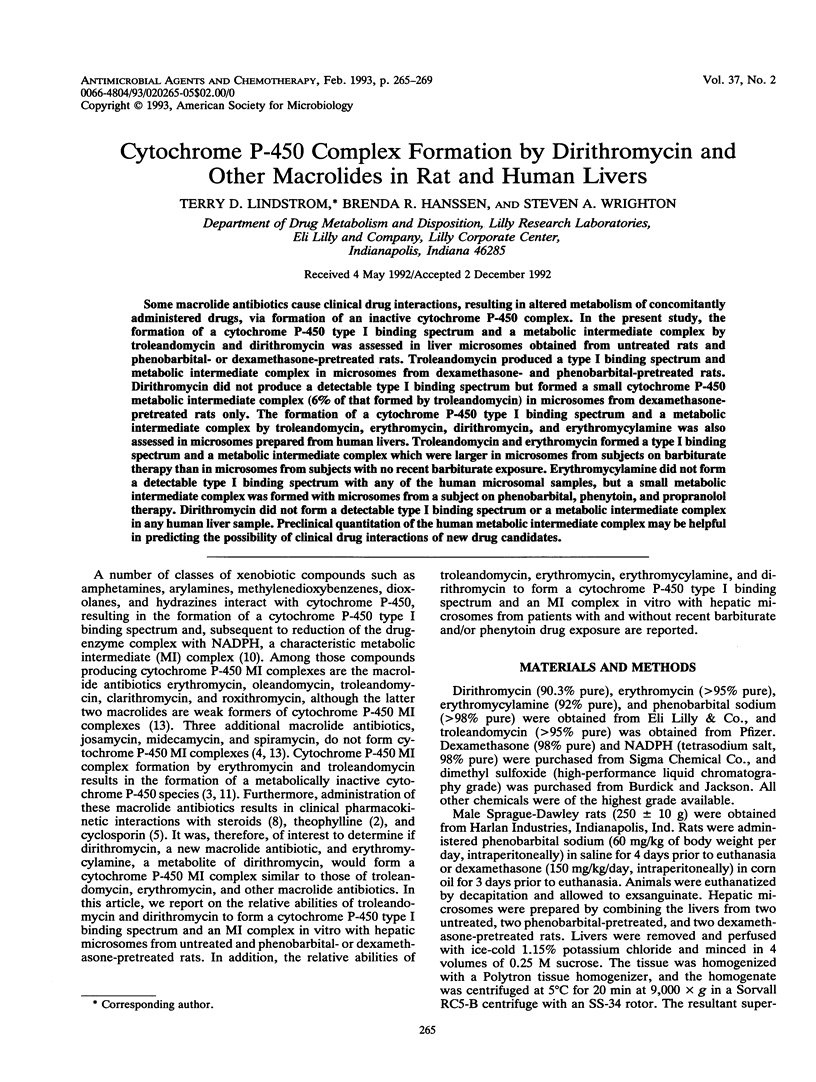
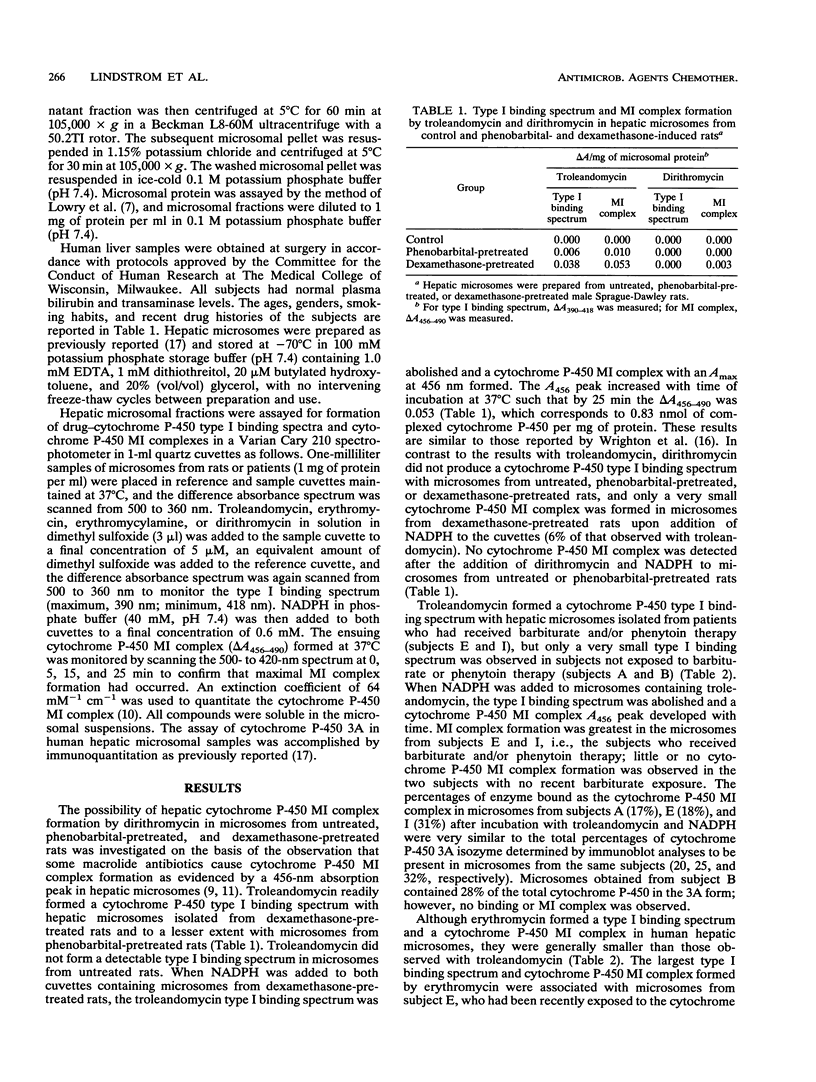
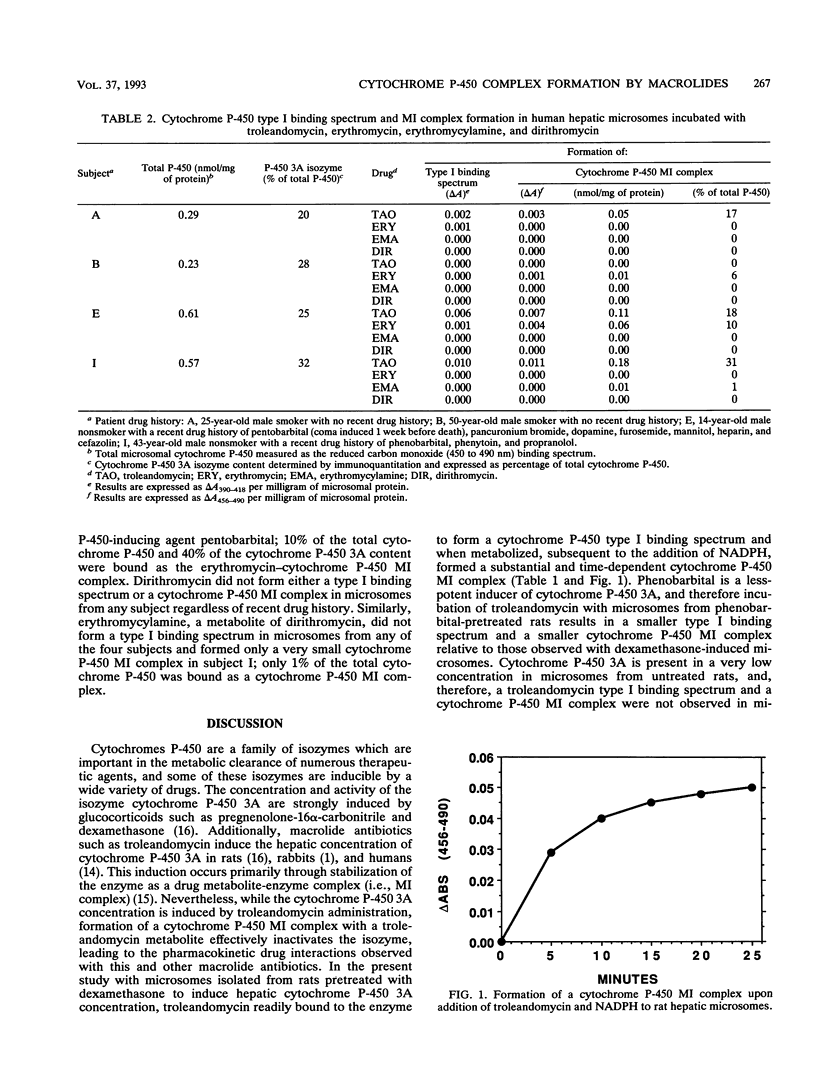
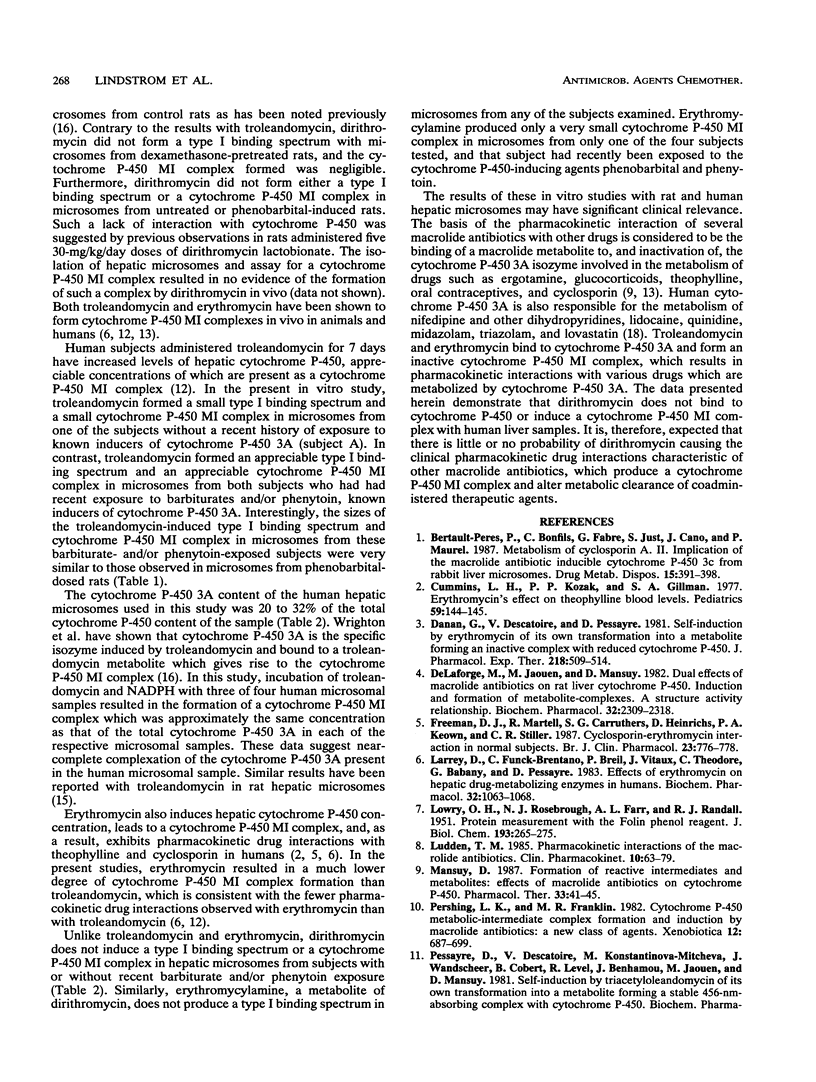
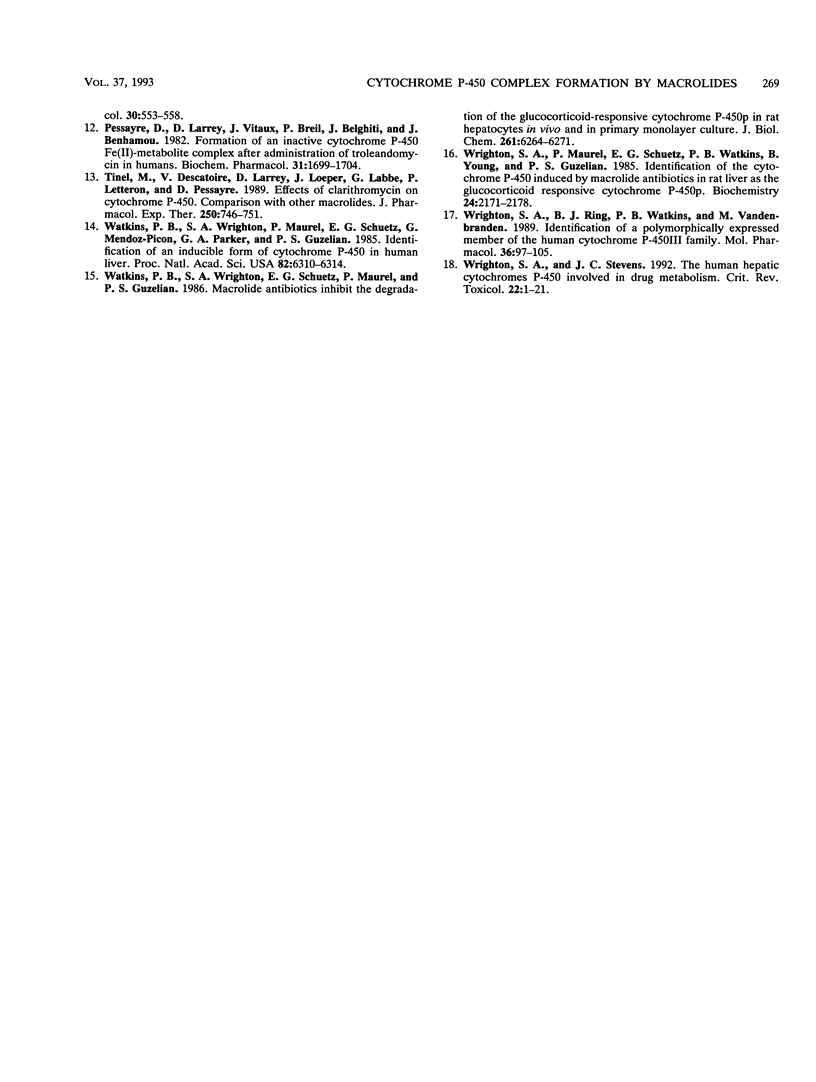
Selected References
These references are in PubMed. This may not be the complete list of references from this article.
- Bertault-Peres P., Bonfils C., Fabre G., Just S., Cano J. P., Maurel P. Metabolism of cyclosporin A. II. Implication of the macrolide antibiotic inducible cytochrome P-450 3c from rabbit liver microsomes. Drug Metab Dispos. 1987 May-Jun;15(3):391–398. [PubMed] [Google Scholar]
- Danan G., Descatoire V., Pessayre D. Self-induction by erythromycin of its own transformation into a metabolite forming an inactive complex with reduced cytochrome P-450. J Pharmacol Exp Ther. 1981 Aug;218(2):509–514. [PubMed] [Google Scholar]
- Delaforge M., Jaouen M., Mansuy D. Dual effects of macrolide antibiotics on rat liver cytochrome P-450. Induction and formation of metabolite-complexes: a structure-activity relationship. Biochem Pharmacol. 1983 Aug 1;32(15):2309–2318. doi: 10.1016/0006-2952(83)90178-8. [DOI] [PubMed] [Google Scholar]
- Freeman D. J., Martell R., Carruthers S. G., Heinrichs D., Keown P. A., Stiller C. R. Cyclosporin-erythromycin interaction in normal subjects. Br J Clin Pharmacol. 1987 Jun;23(6):776–778. [PMC free article] [PubMed] [Google Scholar]
- LOWRY O. H., ROSEBROUGH N. J., FARR A. L., RANDALL R. J. Protein measurement with the Folin phenol reagent. J Biol Chem. 1951 Nov;193(1):265–275. [PubMed] [Google Scholar]
- Larrey D., Funck-Brentano C., Breil P., Vitaux J., Theodore C., Babany G., Pessayre D. Effects of erythromycin on hepatic drug-metabolizing enzymes in humans. Biochem Pharmacol. 1983 Mar 15;32(6):1063–1068. doi: 10.1016/0006-2952(83)90626-3. [DOI] [PubMed] [Google Scholar]
- Ludden T. M. Pharmacokinetic interactions of the macrolide antibiotics. Clin Pharmacokinet. 1985 Jan-Feb;10(1):63–79. doi: 10.2165/00003088-198510010-00003. [DOI] [PubMed] [Google Scholar]
- Mansuy D. Formation of reactive intermediates and metabolites: effects of macrolide antibiotics on cytochrome P-450. Pharmacol Ther. 1987;33(1):41–45. doi: 10.1016/0163-7258(87)90026-x. [DOI] [PubMed] [Google Scholar]
- Pershing L. K., Franklin M. R. Cytochrome P-450 metabolic-intermediate complex formation and induction by macrolide antibiotics; a new class of agents. Xenobiotica. 1982 Nov;12(11):687–699. doi: 10.3109/00498258209038944. [DOI] [PubMed] [Google Scholar]
- Pessayre D., Larrey D., Vitaux J., Breil P., Belghiti J., Benhamou J. P. Formation of an inactive cytochrome P-450 Fe(II)-metabolite complex after administration of troleandomycin in humans. Biochem Pharmacol. 1982 May 1;31(9):1699–1704. doi: 10.1016/0006-2952(82)90671-2. [DOI] [PubMed] [Google Scholar]
- Tinel M., Descatoire V., Larrey D., Loeper J., Labbe G., Letteron P., Pessayre D. Effects of clarithromycin on cytochrome P-450. Comparison with other macrolides. J Pharmacol Exp Ther. 1989 Aug;250(2):746–751. [PubMed] [Google Scholar]
- Watkins P. B., Wrighton S. A., Maurel P., Schuetz E. G., Mendez-Picon G., Parker G. A., Guzelian P. S. Identification of an inducible form of cytochrome P-450 in human liver. Proc Natl Acad Sci U S A. 1985 Sep;82(18):6310–6314. doi: 10.1073/pnas.82.18.6310. [DOI] [PMC free article] [PubMed] [Google Scholar]
- Watkins P. B., Wrighton S. A., Schuetz E. G., Maurel P., Guzelian P. S. Macrolide antibiotics inhibit the degradation of the glucocorticoid-responsive cytochrome P-450p in rat hepatocytes in vivo and in primary monolayer culture. J Biol Chem. 1986 May 15;261(14):6264–6271. [PubMed] [Google Scholar]
- Wrighton S. A., Maurel P., Schuetz E. G., Watkins P. B., Young B., Guzelian P. S. Identification of the cytochrome P-450 induced by macrolide antibiotics in rat liver as the glucocorticoid responsive cytochrome P-450p. Biochemistry. 1985 Apr 23;24(9):2171–2178. doi: 10.1021/bi00330a010. [DOI] [PubMed] [Google Scholar]
- Wrighton S. A., Ring B. J., Watkins P. B., VandenBranden M. Identification of a polymorphically expressed member of the human cytochrome P-450III family. Mol Pharmacol. 1989 Jul;36(1):97–105. [PubMed] [Google Scholar]
- Wrighton S. A., Stevens J. C. The human hepatic cytochromes P450 involved in drug metabolism. Crit Rev Toxicol. 1992;22(1):1–21. doi: 10.3109/10408449209145319. [DOI] [PubMed] [Google Scholar]


